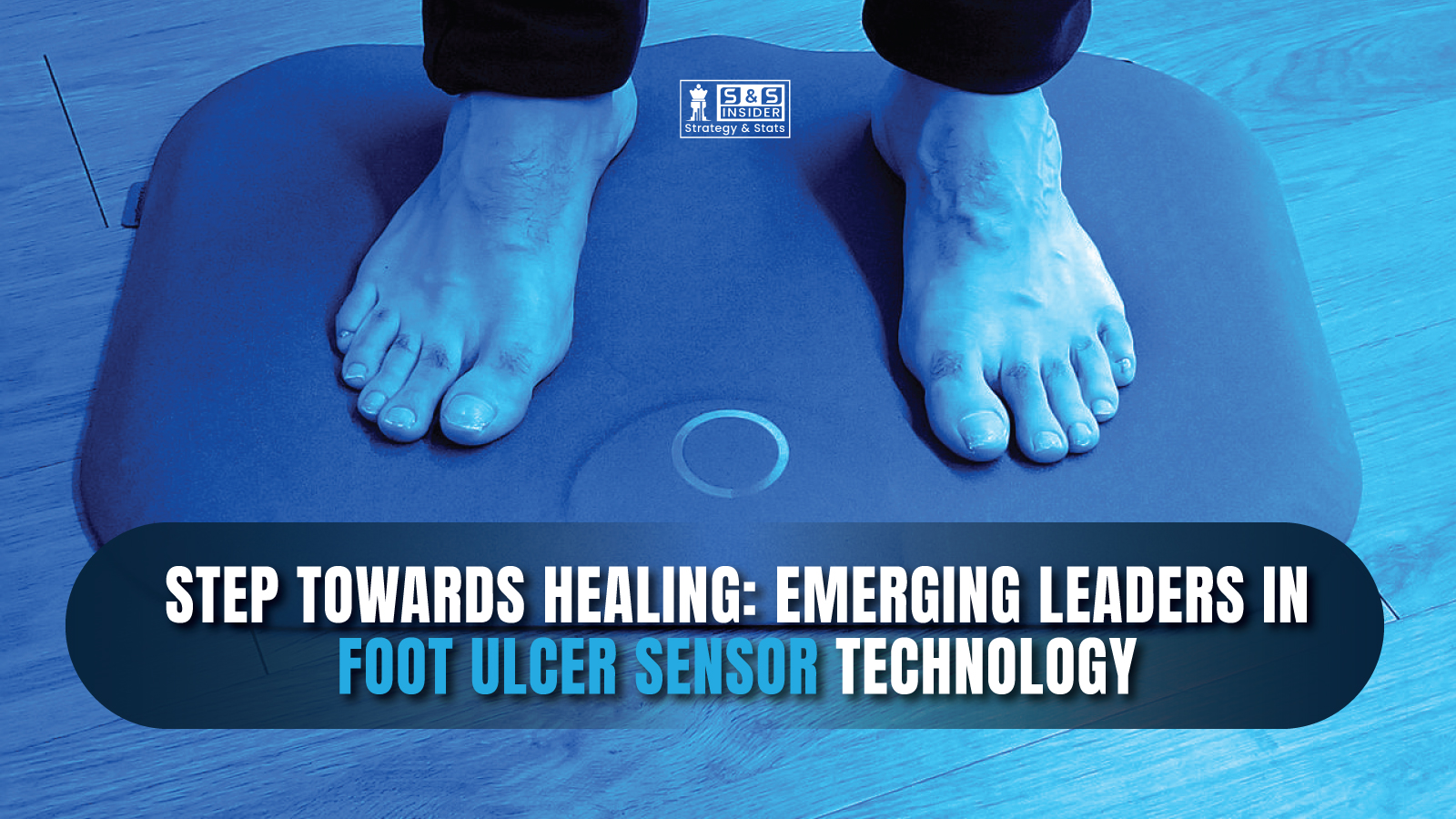
A significant worldwide health concern, diabetic foot ulcers and other chronic sores are expensive to cure and have a catastrophic impact on patients' quality of life. Foot ulcer therapy sensors are a novel class of medical gadgets that have surfaced in recent years. In order to identify early indicators of tissue stress, relieve pressure, and help patients and clinicians avoid and heal ulcers more quickly, these devices integrate motion analysis, temperature monitoring, pressure mapping, and occasionally bioelectrical or biochemical sensing. An outline of the market, the therapeutic implications of the technology, and the profiles of some of the top businesses in this field are provided below.
Why Sensors Matter for Foot Ulcers?
Foot ulcers frequently start out quietly and days or weeks may pass before a visible wound appears due to excessive plantar pressure, mild ischemia, or a slight heat change. Compared to episodic clinic checkups, sensors provide objective, continuous or semi-continuous data that can detect risk tendencies earlier. This facilitates behavior adjustment (gait modification), targeted offloading (orthoses, cast, footwear), and remote monitoring, all of which lower the risk of ulcers, hasten their recovery, and save long-term expenses.
Technologies Used in the Sensors:
Pressure mapping insoles and mats — high-resolution arrays measure spatial pressure distribution across the sole to flag risky hotspots.
Temperature sensors — localized rises in temperature can indicate inflammation or infection.
Motion and gait sensors — IMUs (accelerometers/gyroscopes) identify abnormal gait that increases shear stress.
Bioelectric/biochemical sensors — emerging options detect tissue perfusion or wound biomarkers.
Data platforms & AI — cloud dashboards and predictive models translate raw signals into actionable alerts for clinicians and patients.
Some of the Leading Foot Ulcer Sensor Providers are:
Below are profiles of several companies that are important to watch. Each takes a slightly different approach, from wearable insoles to integrated clinical monitoring systems, further illustrating how diverse the field has become.
Moticon ReGo AG (Germany)
Lightweight, full-foot insole sensor systems that combine gait analysis and pressure mapping are the specialty of Moticon ReGo AG. Their devices are made to last for a long time in regular shoes and are intended to provide patients and physicians with ongoing input without interfering with daily activities. The company focuses on data fidelity and durability, making it appropriate for home and outpatient monitoring.
Sensors Products Inc. (USA)
Foot health gadgets and pressure mats have benefited from Sensors Products Inc.'s extensive experience with optical and tactile sensor components. They frequently provide high-resolution data to support the diagnosis of pressure-related dangers and the validation of offloading therapy in both clinical and research contexts.
Voxelcare (USA)
Voxelcare specializes in remote patient monitoring systems that integrate physician dashboards with wearable sensors. Their strategy focuses on incorporating sensor streams into telehealth processes so that wound care teams can triage patients and take action more quickly. In order to transform sensor data into early warnings, the organization emphasizes predictive analytics.
Digitsole (France)
Digitsole is well-known for its connected shoes and smart insoles that combine embedded sensors and comfort. Although Digitsole offers a variety of products for sports and general wellness, their temperature- and pressure-aware insoles are used by patients and physicians to monitor foot health. They also provide adherence tracking and feedback via mobile apps for prescription discharge.
Linepro Controls Pvt Ltd. (India)
With an emphasis on creating reliable, affordable solutions appropriate for developing markets, Linepro Controls offers sensor hardware and control systems. Given the prevalence of diabetic foot disease worldwide, their devices can fill a significant need by offering insole sensor arrays and control electronics that can be tailored to local healthcare environments and resource limitations.
PI Bioelectronics Co., Ltd. (South Korea)
PI Bioelectronics operates at the nexus of wound care and bioelectrical sensing. They investigate technologies that evaluate tissue perfusion and viability in addition to pressure and temperature data. Clinical judgment about debridement, offloading, and vascular referrals can be enhanced by such multimodal sensing.
Sensors ia Health (USA)
Clinically focused sensor systems with a focus on integration into standard care routes are developed by Sensors is Health. In order to scale sensor-based care in hospitals and outpatient clinics, their products concentrate on clinical workflows, regulatory readiness, and compatibility with electronic health records.
Challenges and Opportunities in the Industry:
Clinical validation, regulatory permissions, reimbursement procedures, and professional training are some of the obstacles to adoption. When using electronics on a regular basis, data privacy and device reliability are also important considerations. There are plenty of prospects, though, since demand is driven by aging populations, an increase in the frequency of diabetes, and a move toward remote care. Predictive models powered by AI and more affordable hardware will increase accessibility and influence even more.
Conclusion:
Sensors for treating foot ulcers are revolutionizing the way medical professionals identify risk and treat wounds. These technologies, which range from multimodal bioelectronic platforms to high-resolution pressure insoles, shift care from reactive to proactive, increasing results and reducing expenses. Together, these businesses, which include Moticon ReGo AG, Sensors Products Inc., Voxelcare, Digitsole, Linepro Controls, PI Bioelectronics, and Sensors ia Health, push the field in the direction of more individualized, data-driven wound care. Sensor-based prevention and early intervention will probably become commonplace elements of contemporary foot ulcer care as clinical evidence, payment, and interoperability advance.